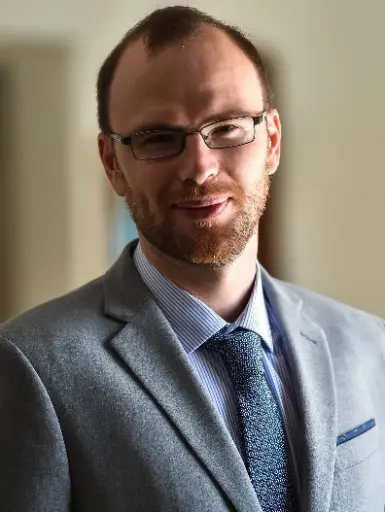The microstructure of a material may be small, but it can have a big impact on the material’s overall performance.
Take, for example, the strength of the steel members of a bridge or the vibration-damping properties of a golf club’s graphite shaft.
 Stephan Rudykh
Stephan Rudykh
Nearly all of a material’s physical properties depend on its microstructure—a structure larger than the atomic scale but small enough that a microscope is needed to discern it.
And the good news is that it’s possible to tweak that microstructure.
In his research, Stephan Rudykh investigates how controlling and arranging the microstructures of materials in different ways can dramatically change a material’s overall properties and functionality.
“By understanding how we can arrange microstructures in certain ways, I aim to provide design rules for creating and tailoring materials as we want them to be,” says Rudykh, who joined the UW-Madison mechanical engineering faculty in January 2018 as an assistant professor.
As he develops these new design rules, Rudykh also taps into the age-old design wisdom found in nature. For example, inspired by the scale-tissue protective systems in fish, Rudykh has designed a flexible, lightweight body armor that could potentially protect its wearer from a bullet or a knife without restricting mobility.
The key, he says, was controlling the microstructure, which allowed him to tune the material’s properties to be highly flexible while also being protective.
Rudykh uses a mix of theory, modeling and experiments involving advanced 3D printing techniques. “Using 3D printing to create these microstructured materials at different length scales allows us to realize many theoretical modeling predictions in a direct way, and in most cases we learn something new from experiments that wasn’t accounted for in modeling,” he says. “Experiments keep the modeling realistic.”
A major focus of his research is on understanding the mechanics of soft materials, including human biological tissues. Rudykh says there is much we don’t know about the role of mechanics in the behavior of the soft matter in our bodies, and he hopes his research will shed more light on how our bodies work, which could ultimately aid clinicians in treating various medical conditions.
In addition, this research could provide tools for designing soft robots. Unlike their traditional rigid counterparts, soft robots can bend, stretch, deform and change shape—capabilities that open up new potential applications for robots.
Rudykh hopes to create new materials with multiple capabilities, which would be especially useful for soft robots. “We could have a polymeric soft material that would be able to change shape and adapt to different conditions while also being able to touch surfaces and sense the environment,” he says. “Instead of having a conventional, rigid mechanism with different pieces, we would have one piece of soft material that could do many things.”
Rudykh is also interested in studying instability in materials. Because instability in a structure can lead to buckling and eventually structural collapse, engineers traditionally work to safeguard their designs from instabilities. However, Rudykh sees instability as an exciting tool he can harness to create novel soft materials that can, for example, drastically change their shape and properties in a controlled way.
After receiving his PhD from Ben-Gurion University in Israel, Rudykh was a postdoctoral scholar in the mechanical engineering department at MIT. He then returned to Israel, where he was an assistant professor of aerospace engineering, at the Technion-Israel Institute of Technology from 2014 through 2017 before moving to Madison.
Rudykh says a big motivation for coming to UW-Madison was the opportunity to work closely with outstanding faculty in the mechanical engineering department, and across the college.
“I’m very excited to be at UW-Madison because there is a strong and growing expertise in these areas, and I’m looking forward to collaborating with my colleagues on these exciting research directions,” he says.